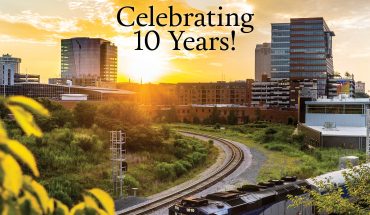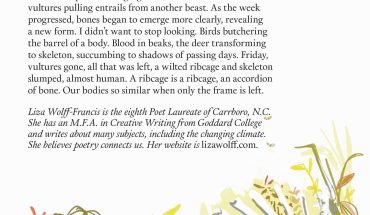Designed by Phil Freelon, this new public space in downtown Raleigh honors the Black experience through words and sculpture.
by Addie Ladner | photography by Joshua Steadman
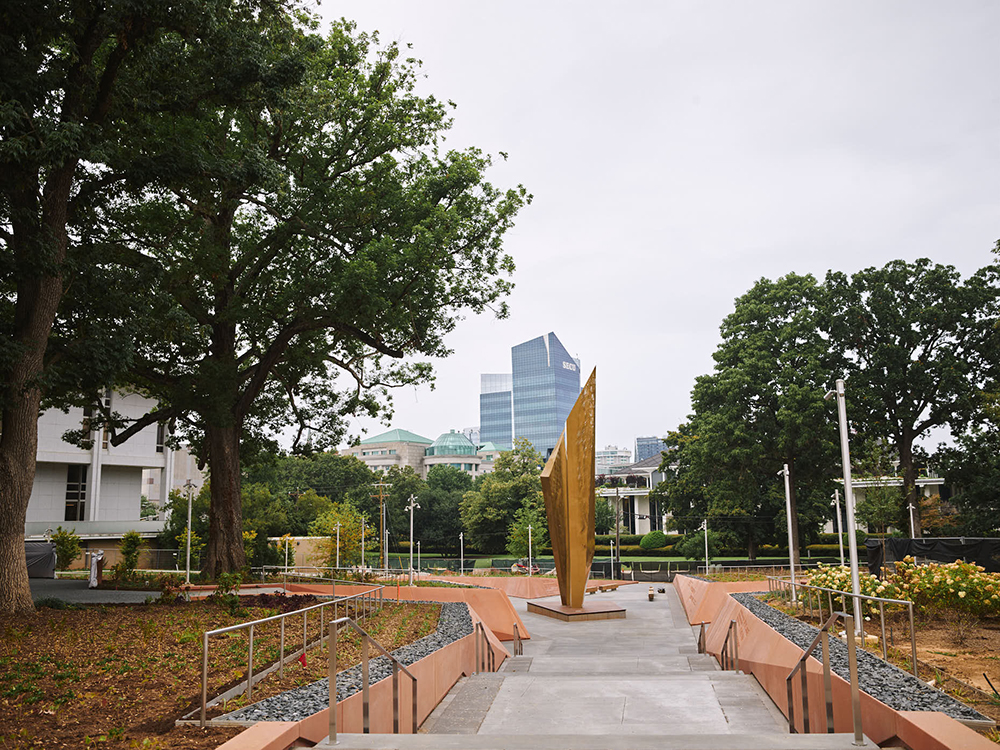
A cluster of established oak trees live on the corner of Wilmington and Lane Streets, on an acre of sloped land. The trees’ roots run deep, breaking through the North Carolina clay, just out of sight. These trees are a symbol for the new public space they shade, the North Carolina Freedom Park. “Just like the root system of these live oaks, the Black experience was, and still is, unseen,” says Dr. Victoria Gallagher, one of the park’s champions.
“This park will now open that up. Stories will be seen, heard and recognized.” More than 20 years in the making, the park was designed by the late Phil Freelon and stewarded by Zena Howard and the team at Perkins&Will. The roots of the oak anchored his layout; Freelon hoped they would encourage contemplation and reverence. The park was built by Holt Brothers Construction. “We are honored and humbled to carry the baton across the finish line and to see so many people’s hard work come to fruition.” says Terrence Holt.
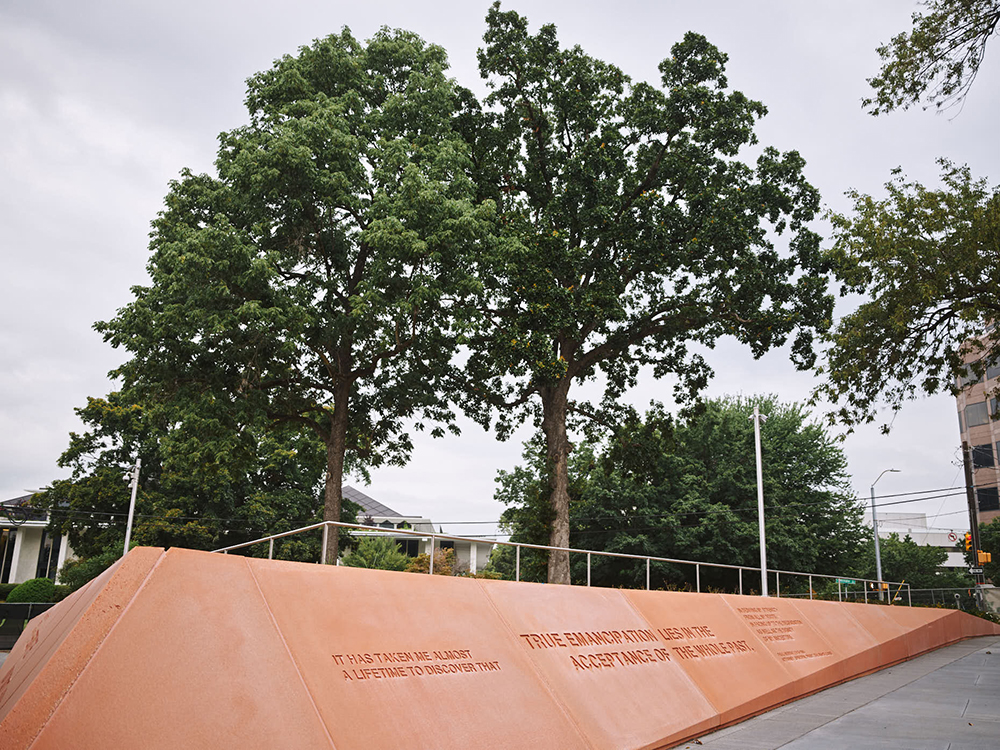
At the park’s epicenter stands a two-panel gold sculpture, Beacon of Freedom, which symbolizes Black resilience. Each pillar weighs about 1,000 pounds, and when it’s illuminated at night, it resembles a torch. Five walkways lead to the sculpture, lined by cement walls the color of red clay. Inscribed in the walls are quotes about freedom from prominent Black authors, abolitionists, scholars and civil rights leaders, including James E. Shepard, Ella Baker and Maya Angelou. The passages date from the 1700s to the present day. “Often we’ve disregarded Black North Carolinians who have spoken to us about freedom. Now we can see their words and be inspired,” says Gallagher.
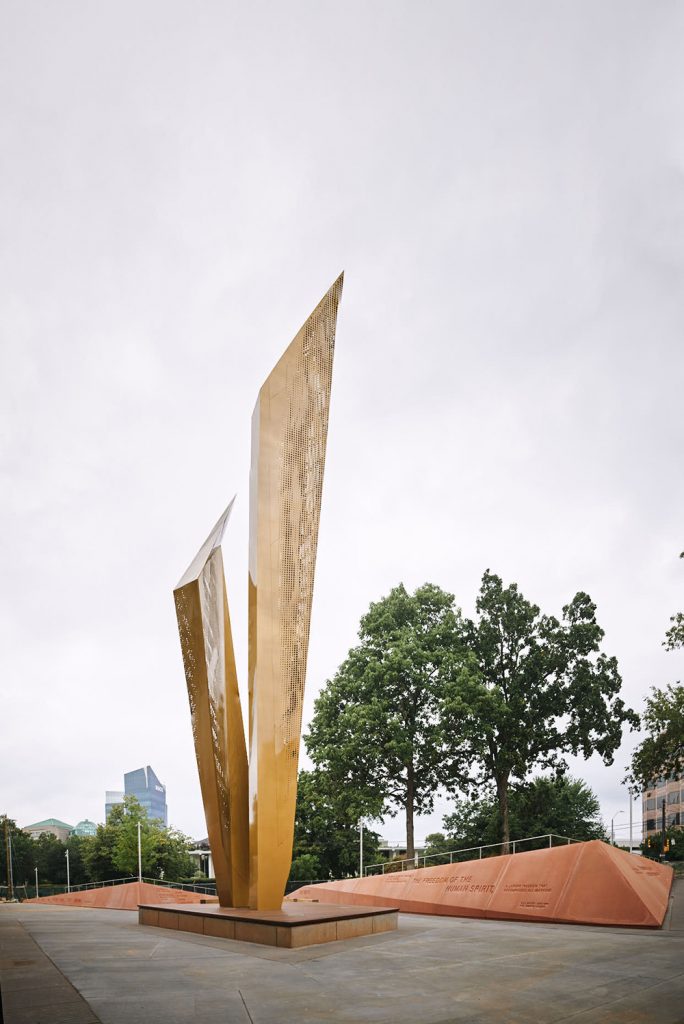
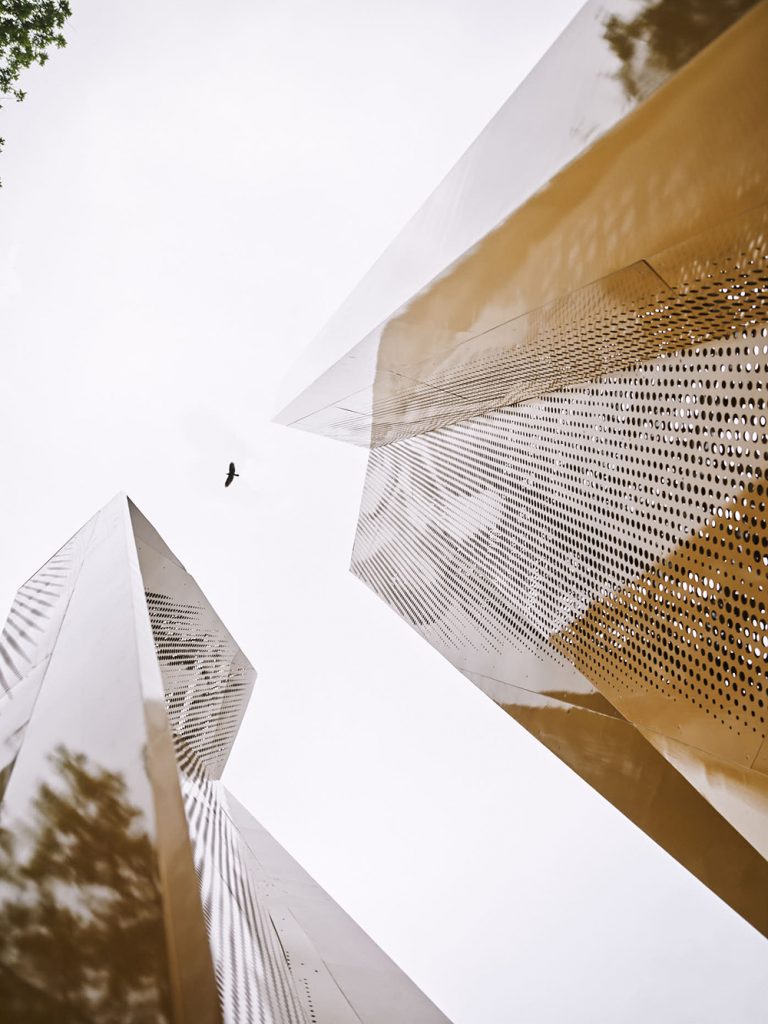
Among them are words from North Carolina attorney and priest Pauli Murray: “It has taken me almost a lifetime to discover that true emancipation lies in the acceptance of the whole past, in deriving my strength from all my roots, in facing up to the degradation as well as the dignity of my ancestors.” In the coming months and years, new roots will form below the surface as the natural areas of the park fill in with smaller trees and perennials – and as visitors use the park to acknowledge and share the stories of Black North Carolinians.
This article originally appeared in the September 2023 issue of WALTER magazine.


